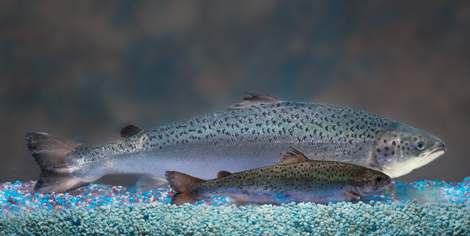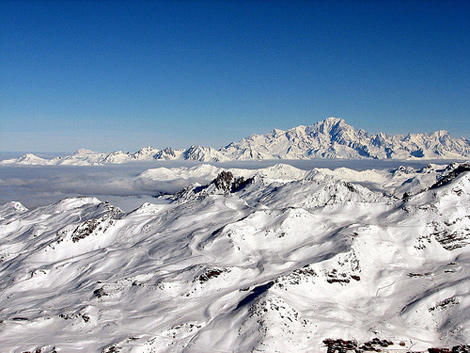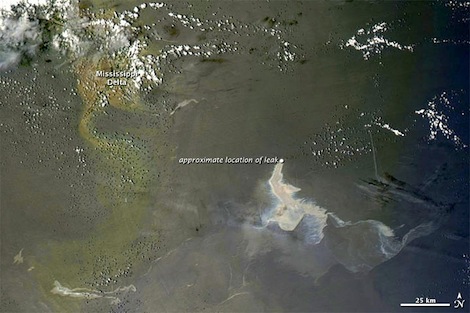Posted on October 7th, 2010 by axb

New genetically engineered salmon grows twice as fast as its traditional counterpart (fish above are the same age)
The idea of genetically modified food may give some of us the creeps. But humans have been genetically modifying crops and livestock for thousands of years through selective cultivation and breeding. So, chances are that most of the food you eat has been engineered in some way. And now, for the first time, a fish whose DNA has been altered might be swimming into your local grocery store.
AquAdvantage is a new type of transgenic Atlantic Salmon that has been modified with growth genes from two other fish – the Chinook salmon and the eel-like Ocean pout. Produced by bioengineering company AquaBounty Technologies, it promises to be cheaper and more readily available than conventional salmon.
Read More
Filed under: Agricultural, e-News, Ocean | 4 Comments »
Tags: Agricultural, Food, Ocean
Posted on August 30th, 2010 by axb

Mont Blanc from 10,500 ft.
In 1892, an immense amount of floodwater broke free from an Alpine glacier, engulfing a nearby village. Today, after the discovery of more water accumulated beneath the glacier, engineers in France are taking novel steps to prevent such a disaster from recurring.
The team of specialists plans to drill beneath the Tete Rousse glacier and extract about 65,000 cubic meters of water (that’s enough to fill about 26 Olympic-sized pools!).
Read More
Filed under: e-News, Environmental, Ocean | 4 Comments »
Tags: Environmental, Ocean
Posted on August 24th, 2010 by axb

Engineering students Victor Correa Schneider, Trevor Owen, Julia Tsai,
Dan Ferguson, and Benjamin Thompson of UC San Diego
Duuuude, how’s this for a Ph.D. project: Benjamin Thompson, a structural engineering student at UC San Diego, is on a quest to formulate the science of surfboards. He enlisted the help of four undergraduates in the mechanical engineering department to help him out, and together they hit the beach to find out more.
Read More
Filed under: Computer, e-News, Mechanical, Ocean | Comments Off on Surf’s Up!
Tags: Computer, Mechanical, Ocean
Posted on August 3rd, 2010 by jxh
 The oil-eating microorganism Alcanivorax borkumensis
The oil-eating microorganism Alcanivorax borkumensis
Nearly two weeks after BP capped the biggest oil spill in U.S. history, the millions of gallons that gushed into the Gulf of Mexico are disappearing, and oil is no longer washing up on the beaches and marshes along the Louisiana coast.
This reversal, which may seem surprising, can actually be explained by a number of different factors, including the presence of microbes that break down oil in order to grow and reproduce.
Read More
Filed under: Chemical, e-News, Environmental, Ocean | 2 Comments »
Tags: Chemical, Environmental, Ocean
Posted on July 16th, 2010 by axb

NASA satellite image of the oil slick from July 12, 2010
The New York Times is reporting that a cap placed yesterday on the exploded BP oil well appears to be holding steady. After the disastrous oil rig explosion on April 20 off the Gulf of Mexico, BP has struggled to find a solution to stop the deadly leak.
See this graphic for a timeline of previous attempts to cap the leak, and this video for views of the current containment apparatus.
Read More
Filed under: e-News, Environmental, Ocean | 4 Comments »
Tags: Environmental, Ocean












 The oil-eating microorganism Alcanivorax borkumensis
The oil-eating microorganism Alcanivorax borkumensis